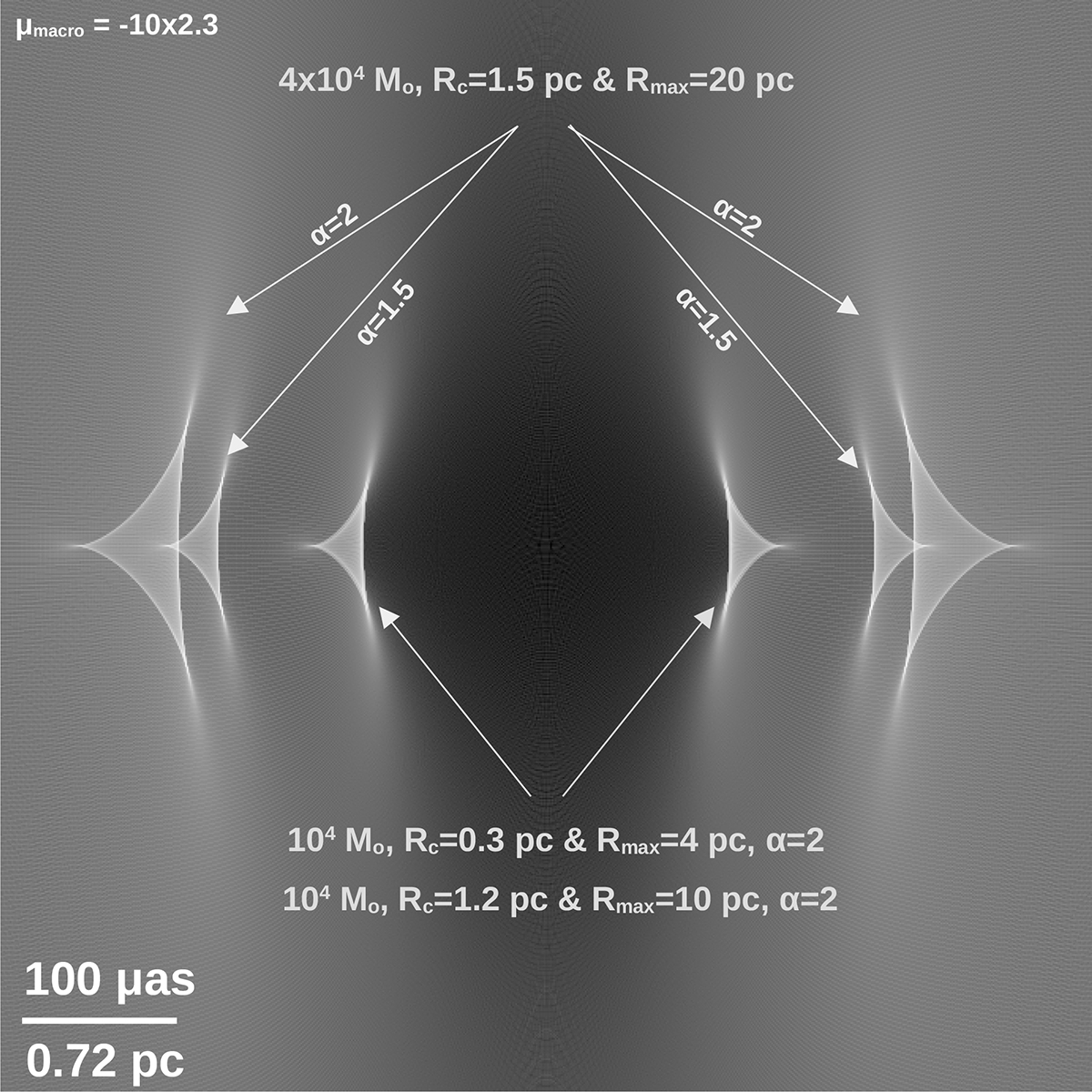Fig. 2.

Download original image
Effect of the millilens profile. Comparison of millicaustics for four millilenses under the influence of the same macromodel magnification (|μ1m| = 23) but for different mass, core size Rc, truncation radius Rmax, and exponent α. The profile is defined as ρ(r)∝(Rc + r)−α. The image shown in grayscale is the sum of the four magnifications from the four millilenses. The caustics for the two millilenses with mass 104 M⊙ and slope α = 2 are nearly identical and fall on top of each other, indicating that the mass is the main driver defining the size of the caustic region. The largest millicaustic corresponds to a millilens with four times more mass, and larger core and truncation radii, but the same slope α. The area above μ = 100 is a factor of four larger than in the smaller millilenses. A third millilens with the same mass, Rc, and Rmax but a shallower profile (α = 1.5) behaves as the larger millilens with α = 2 but a mass of 2.93 × 104 M⊙, owing to the reduction in mass within the Einstein radius. Even shallower profiles (α ≲ 1) with large cores result in subcritical millilenses (no caustics or cusps). On the other hand, a steeper profile with α = 3 or greater produces a millicaustic almost indistinguishable from the one obtained when α = 2.
Current usage metrics show cumulative count of Article Views (full-text article views including HTML views, PDF and ePub downloads, according to the available data) and Abstracts Views on Vision4Press platform.
Data correspond to usage on the plateform after 2015. The current usage metrics is available 48-96 hours after online publication and is updated daily on week days.
Initial download of the metrics may take a while.


